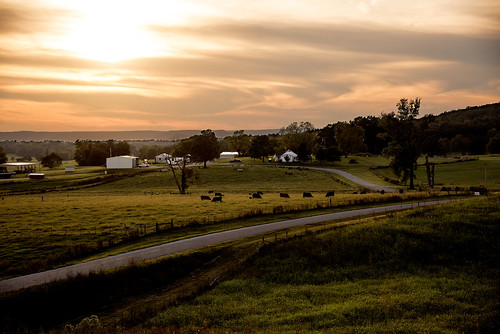Producer meeting focuses on toxic fescue, other livestock topics
By Fred Miller
U of A System Division of Agriculture
March 10, 2017
Fast Facts:
- The Division of Agriculture will hold a free educational meeting for beef producers at the Livestock and Forestry Research Station at Batesville April 18.
- Topics will cover cow/calf, stocker and feedlot production and management.
- Special focus will be on coping with toxic fescue in pastures.
(363 words)
BATESVILLE, Ark. — Toxic fescue pastures can cost beef producers a lot, but University of Arkansas System Division of Agriculture research has developed practices that can minimize or even eliminate losses.
A five-year study by animal scientist Ken Coffey shows that removing cows from toxic fescue pastures 30 days prior to breeding and keeping them on a non-toxic forage for 30 days into the breeding season increased conception 40 percent compared to cows that grazed toxic fescue before and during breeding in spring calving cows.
Research results like this will be the focus of “Is it fescue, or is it just me?” a free educational meeting focusing on livestock production. The meeting will be presented April 18 at the division’s Livestock and Forestry Research Station near Batesville.
Registration begins at 9 a.m. and the program begins at 9:30 a.m.
Don Hubbell, station director, said Division of Agriculture scientists will discuss their research on many segments of the beef production cycle in cow herds. The research topics will cover cow/calf, stocker and feedlot feedlot performance of cattle grazed on toxic vs. non-toxic fescue.
A lot of attention will be given to coping with toxic endophyte-infected fescue. Hubbell said Division of Agriculture research shows how growth-promoting technology and changes in management decisions can improve production in cattle grazed on toxic fescue.
A study by Shane Gadberry, extension associate professor of ruminant nutrition, shows how the use of growth promoting technology improved weight gain by 25 percent in weaned calves grazed on toxic fescue compared to calves grazing toxic fescue with no growth promoters. The increase in individual animal productivity more than paid for the cost of the inputs.
“These presentations will show producers how management changes, large or small, can have a big impact on productivity and profits,” Hubbell said.
For more information, call 870-793-7432 or email Don Hubbell at dhubbell@uark.edu.
The meeting’s agenda is online and can also be downloaded from there in PDF format.
The Livestock and Forestry Research Station — also known as the Batesville Station — is located on Arkansas Hwy. 106, 10.5 miles northwest of Batesville. The station is about 3 miles west of the Hwy. 106 intersection with Arkansas Hwy. 69.
The University of Arkansas System Division of Agriculture is an equal opportunity institution. If you require a reasonable accommodation to participate or need materials in another format, please contact the Batesville Station, 870-793-7432, as soon as possible. Dial 711 for Arkansas Relay..
# # #
Media Contact: Mary Hightower
Dir. of Communication Services
U of A Division of Agriculture
Cooperative Extension Service
(501) 671-2126
mhightower@uada.edu
Related Links
